Travel to Isfahan - Half the World
Isfahan was once one of the largest and most important cities in Central Asia, positioned as it is on the crossroads of the main north-south and east-west trade routes that cross Central Asia. The city was the splendid capital of the Seljuq and Safavid dynasties, and is renowned for its beauty, which has given rise to the Iranian saying that “Isfahan is half the world”. So I suggest every one to travel to Isfahan and enjoy the one of the most beautiful city in the Middle East.
UNESCO classified Espahan, considered one of Iran’s main tourism attractions, as part of World Heritage. Indeed, a great many Europeans tourists visit this city and the numerous palaces that stand witness to its heritage and glorious centuries-old past. Furthermore, the city has a myriad of stunning gardens of which the conception took many decades. Some of these gardens are 350 years old. Thanks to its fertile soil, Espahan is equally famous for its groves and agricultural lands. Factories, especially hydrous factories, abound in the city. Many bridges span the river crossing the city, such as the Allahverdi Khan bridge (known under the name of Si-o-Se pol or Thirty-Three Arches bridge), and the Khadju bridge around which people gather to enjoy the stunning view of the city.
Espahan is well known for its wide avenues and large squares. This city, the hometown of a number of engineers and scholars, is famous for its Iranian carpets that the Iranian family deems it a duty to preserve as if it were an object made of gold. The visitor to Espahan cannot miss the opportunity to amble along in the city’s bazaar displaying its treasures of old archaeological objects as well as the handicrafts and industrial products that have made the reputation of the city.
Espahan’s main civilisational characteristics and religious sites
Compared to other cities in the Islamic Republic of Iran, Espahan was characterised throughout the ages by the diversity of its civilisational attributes and religious sites. Let us review some of its main civilisational characteristics and religious sites:
1- MOSQUES
The Djame Mosque
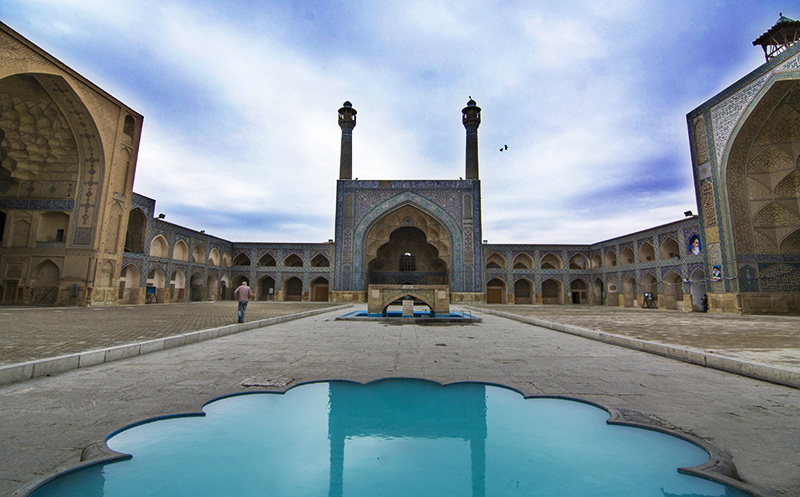
At first, it was just a small mosque that was destroyed and rebuilt many times until the advent of the Seljuks who rebuilt it as it stands today. Of the original mosque, only the facades were kept. The faience tiles, the domes and minarets adorning the mosque were built at a later date. Built in stone and bricks, the prayer hall is made up of 4 iwans.
Shah Abbas Mosque
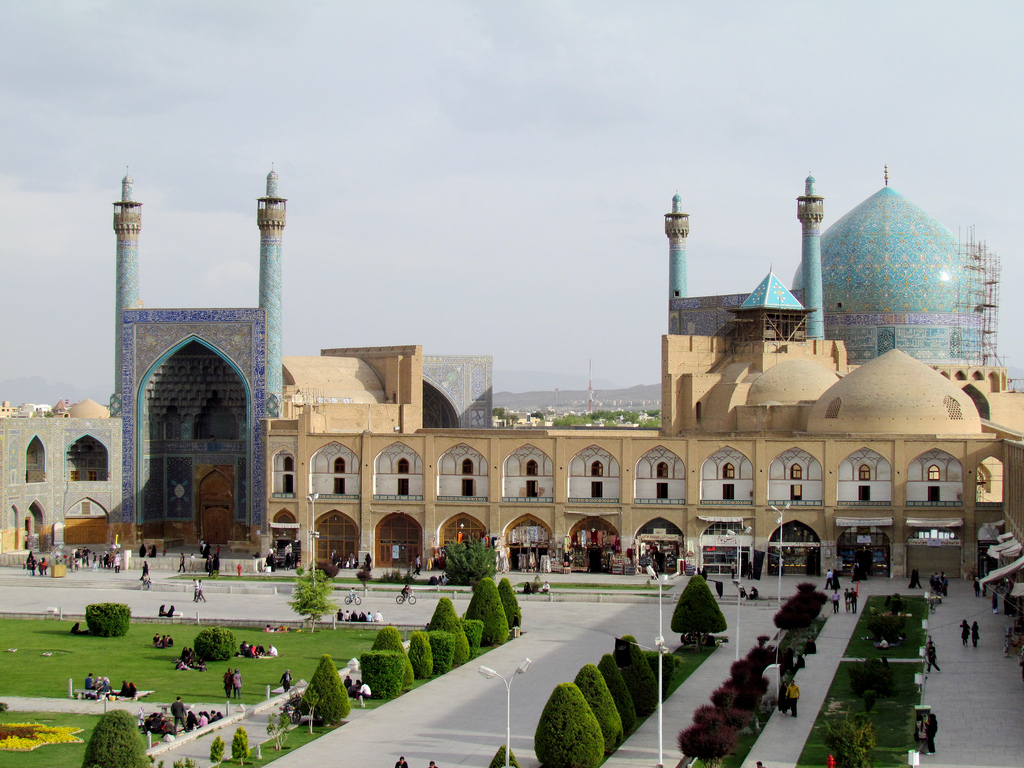
The Shah Abbas mosque is one of the most prestigious monuments of Islamic architecture in Espahan. Overlooking the Shah Abbas Meidan from the south, this mosque is considered one of the benchmarks of the Safavid era. Combining aesthetics with the grandeur of Islamic architecture, its facades, both internal and external, are covered with mosaic arabesques of dazzling colours. Two elegant minarets, about 33 meters-high, flank the entrance from both sides. Its azure blue cupola embellished with mosaic is 27 meters-high.
The Parsian Mosque
This mosque is located in Parsia, located 42 kilometres north-east of Espahan. It is an architectural complex containing an ancient minaret, a Seljuk mosque, as well as a residence built by Shah Abbas I.
Dashti Mosque
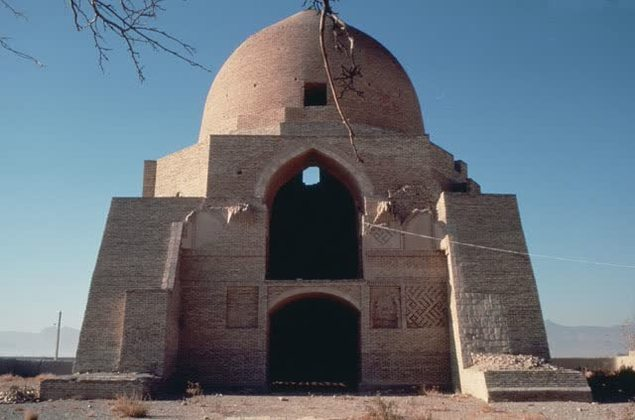
This mosque was named after the village Dashti where it is located on the road linking Espahan to Ziar. The history of this mosque dates back to the XI or XII century. The great simplicity that characterises this edifice is one the main factors facilitating the understanding of the architectonic process used in its construction. Furthermore, its small size and its easy access to tourists make possible a better understanding of the method used in the laying of metal sheeting around its circumference.
The Imam Mosque
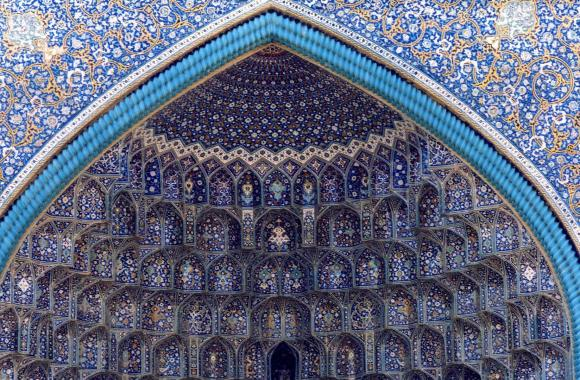
The Imam’s mosque, built during Abbas Shah’s reign, is a genuine architectural masterpiece dazzling with splendour and beauty. The mosque’s minarets are 48 meters-high. To the east, one can see the Lotfollah mosque with its flattened dome.
2- THE PALACES
Ali Ghapu Palace
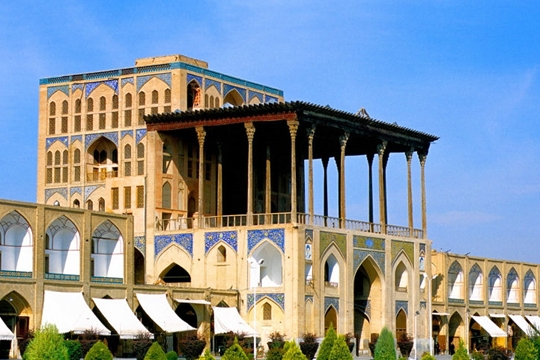
Built by the Safavids, this palace was meant to receive ambassadors and envoys from foreign countries. It has six floors and a myriad of patios. The plaster ornaments and the frescos in this palace are dazzling.
The Hacht Behecht Palace
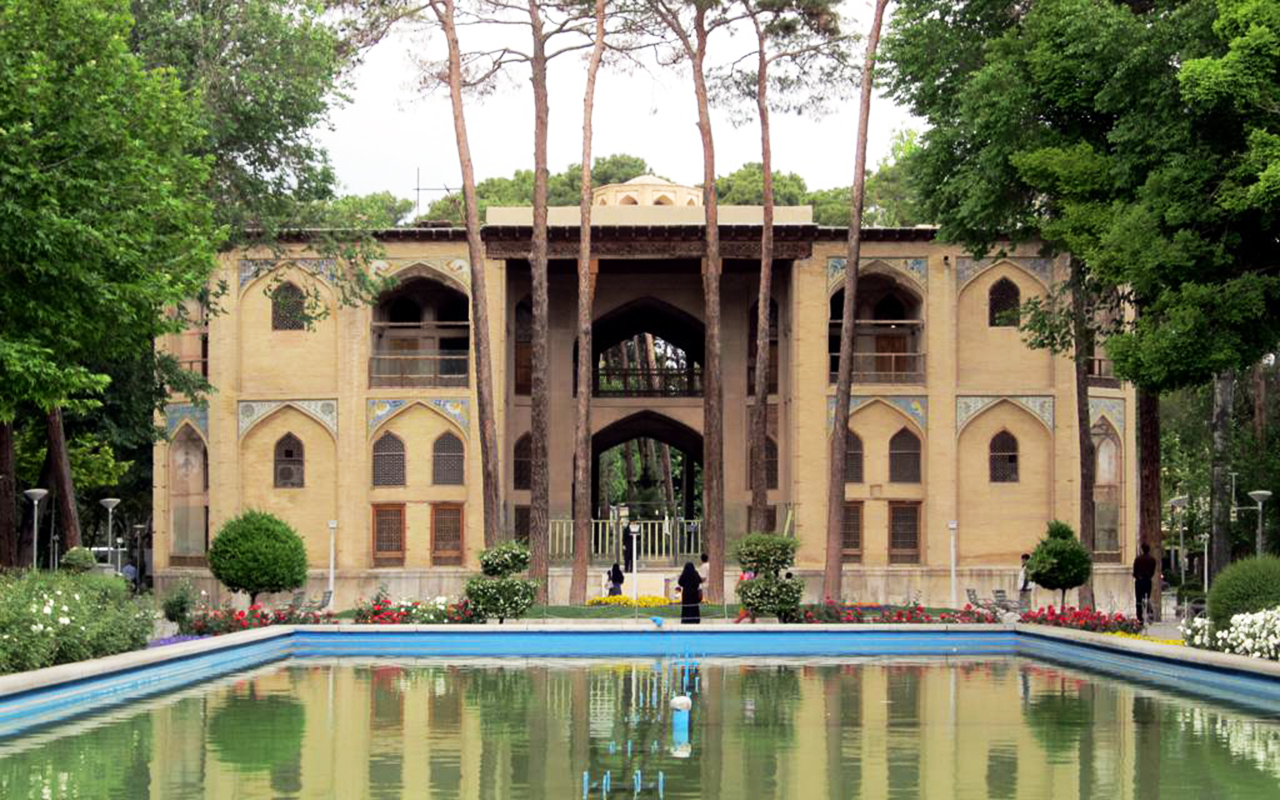
Tchahar Bagh avenue, at the intersection of the present Sheikh Bahai avenue, and was built in the XV century during the reign of Shah Suleiman II.
The Royal Palace
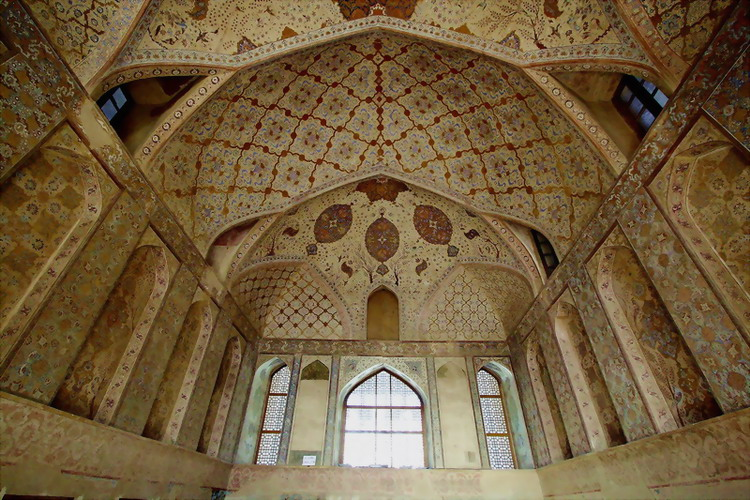
The royal palace is situated in the centre of Espahan, on the south-eastern part of a huge esplanade previously called Meidane Shah, meaning the big portico.
The Forty-Column Palace
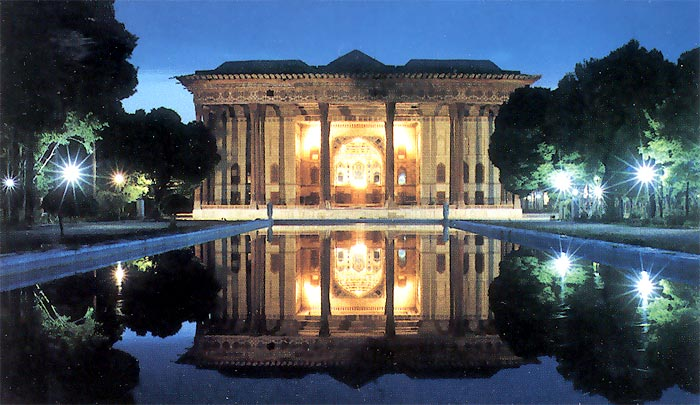
The history of the Tchehel Sotoun, more known as the forty-column palace, dates back to the seventh Safavid king, Shah Abbas II. This palace is considered one of the most beautiful palatial creations built by the Safavids in Espahan. The palace is named after its columns spread in three rows of six columns each, in addition to two more columns at the entrance.
3- THE BRIDGES
Shahrestan Bridge
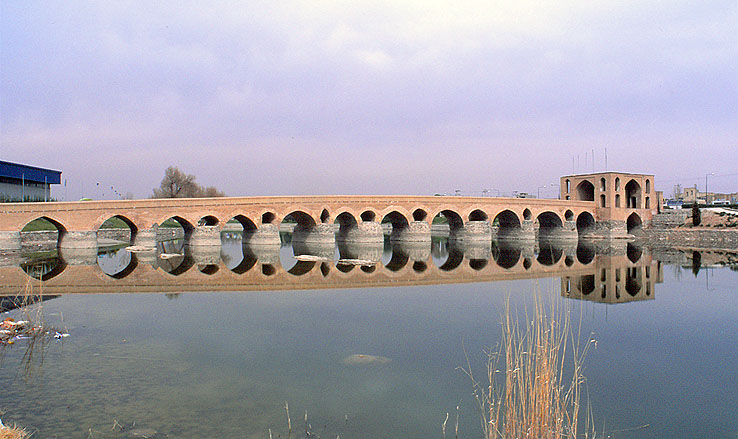
The Shahrestan Bridge was built in the XIV century, east of Espahan. It is located at the junction of the Shahrestan village at the south east with the rural region on the Mediterranean bank. The building of this bridge was inspired from the Romans. The arches supporting it were designed to protect the barges from the Zayandesh river swellings.
Pol Si-o-Seh Bridge
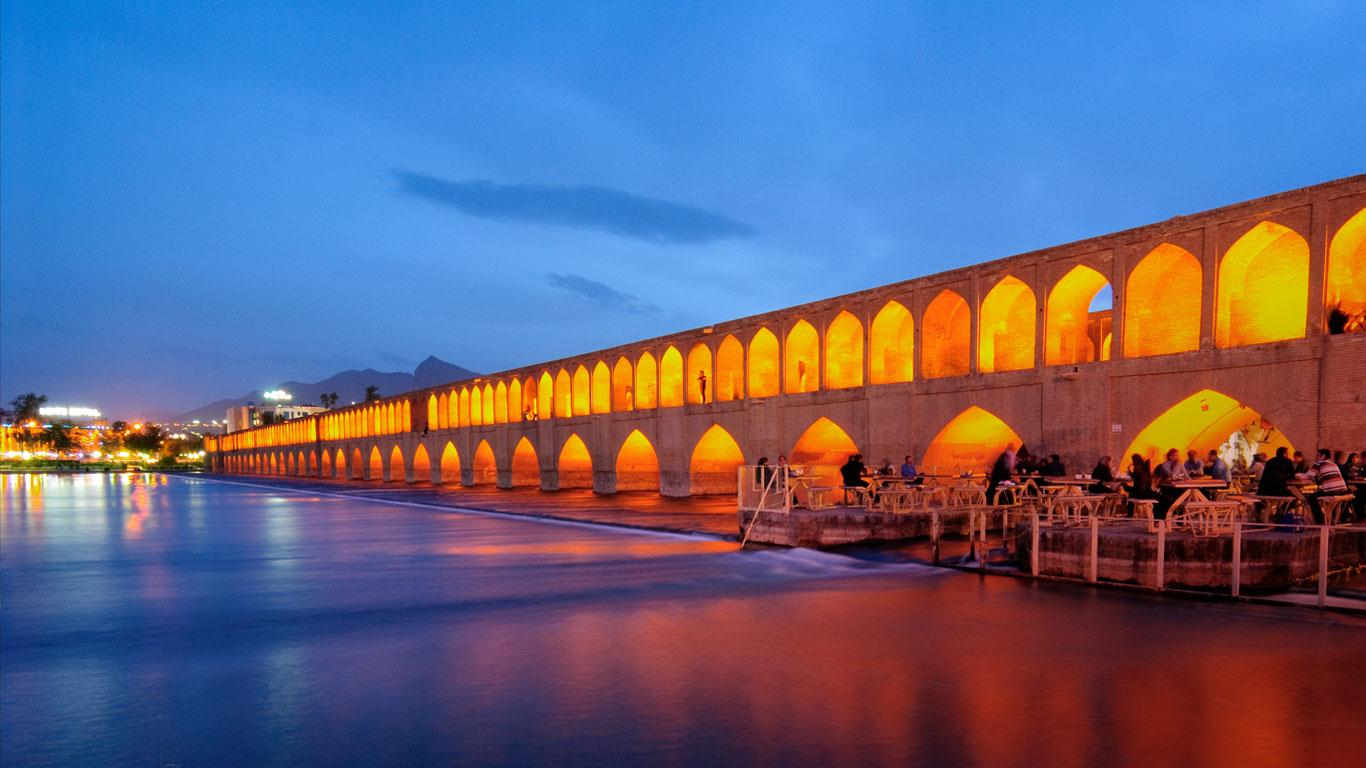
The Pol Si-o-Seh Bridge is made up 33 arches. In 1010H/1602, Shah Abbas I commissioned one of his commanders to build it. The name Pol Si-o-Seh stems from the Persian phrase Si-o-Seh meaning thirty three.
F’ol -e Khadj u Bridge ( Khadj u Bridge)
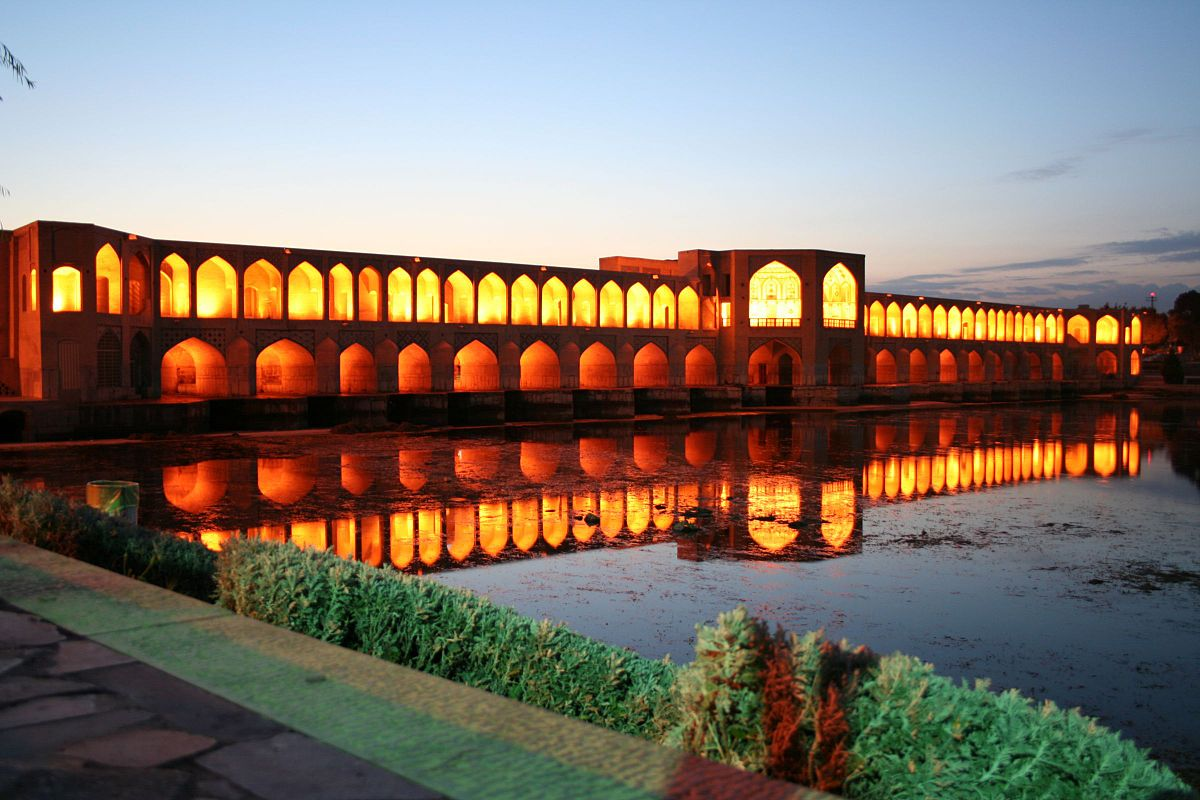
It is named after the “Khadju” district, on the northern bank of the Zayandeh river, linking the northern and the southern banks. The bridge’s adornments, inspired by those of Pol Si-o-Seh, also have two levels. However, contrary to the Pol Si-o-Seh, it was expanded and developed in may areas. The bridge has a length of 110 meters, and its width slightly exceeds 20 meters on most part of its span. On the eastern side, the bridge comprises a huge sluice gate that brings the water up to a level of 2 meters, thus creating a useful basin used in the irrigation of the agricultural fields surrounding it through an intricate network of canals. By way of a staircase, the lower part of the bridge, made up of 20 arches, leads to the upper part containing pavilions that provide passers-by with a meeting and gathering spot.
In visiting Isafahan , You’d have seen the magnificent structures developed by the Seljuk and Safavid rulers. Isfahan was supposed to be my highlight of Iran. Isfahan, Iran is often called one of the most beautiful cities you will ever see and its name in Persian means “half the world”. And I enjoyed Isfahan, I really did.




